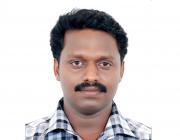PH 100 ENGINEERING PHYSICS
Course Objectives:
Most of the engineering disciplines are rooted in Physics. In fact a good engineer is more or less an applied physicist. This course is designed to provide a bridge to the world of technology from the basics of science and to equip the students with skills in scientific inquiry, problem solving, and laboratory techniques
Syllabus:
Harmonic Oscillations:
Damped and Forced Harmonic Oscillations.
Waves: One Dimensional and Three Dimensional waves.
Interference: Interference in thin films (Reflected system)
Diffraction: Fraunhofer and Fresnel Diffraction, Grating.
Polarization of Light: Double refraction, production and detection of polarized light.
Superconductivity: Properties and Applications
Quantum Mechanics: Schrodinger Equations- Formulation and Solution, Operators, Applications.
Statistical Mechanics: Microstates and macro states Maxwell- Boltzmann, Bose-Einstein and Fermi Dirac statistics, Planck’s Radiation formula
Acoustics: Intensity of sound, Reverberation and design concepts
Ultrasonics: Production, Detection and Applications, NDT methods
LASER: Properties, Working Principles, Practical Lasers.
Photonics: Basics of Solid State lighting, Photo detectors, Solar Cells, Fiber Optics
Expected outcome:
Familiarity with the principles of Physics and its significance & applications in engineering systems and technological advances.
